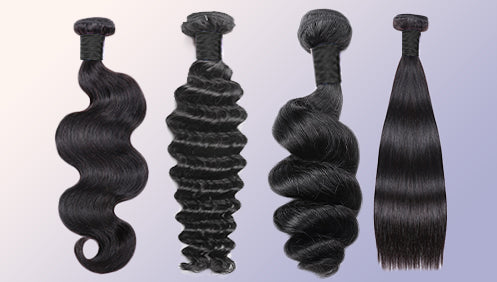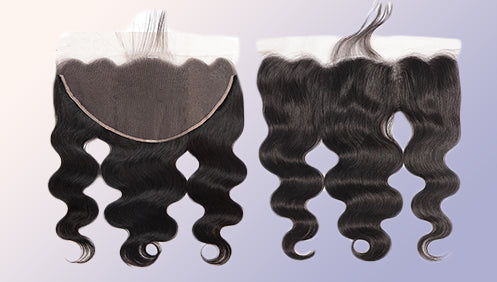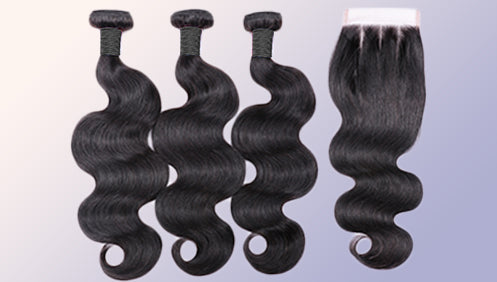The Significance of the Revolution in Hair Care and Scalp Health
When deciding between a 7x5 lace wig and a 5x5 lace wig, it’s important to consider the key differences and how they align with your personal needs. Here’s a breakdown of what you should know about each:
1. Lace Size:
- 7x5 Lace Wig: The "7x5" refers to the size of the lace area. In this case, the lace covers a 7-inch by 5-inch section of your scalp, providing a slightly larger and more flexible base for a natural look. It is usually favored by those who want more versatility in parting their hair and a larger area for customization, such as styling or applying more products.
- 5x5 Lace Wig: This is a smaller lace area, with 5 inches by 5 inches of lace, which is still fairly versatile but offers a slightly more compact and less customizable space. The 5x5 is often ideal for those who prefer a simpler, more straightforward application with less maintenance or for people with smaller heads.
2. Versatility:
- 7x5 Lace Wig: The larger lace gives you more styling options, particularly when it comes to creating deeper parts (like side or middle parts), updos, or more freedom in how you apply heat or manipulate the wig. It’s a great choice for someone who wants more flexibility in styling.
- 5x5 Lace Wig: While still versatile, the smaller lace area may limit the range of parting styles or updos you can achieve, but it still offers a natural, seamless look for everyday wear.
3. Comfort & Fit:
- 7x5 Lace Wig: With a larger lace area, it may require a bit more care to ensure a snug, comfortable fit. However, if the wig is well-made, the additional lace can be more breathable, offering comfort for extended wear.
- 5x5 Lace Wig: Tends to be lighter and can feel more breathable as there’s less lace material. If you have a smaller head or prefer a less bulky feel, this might be a more comfortable option.
4. Realism:
- 7x5 Lace Wig: The larger lace area allows for more room to blend the hairline and scalp, creating a more natural and realistic look. It may be better for people who want an extremely seamless hairline, especially when paired with lace tinting or other customizations.
- 5x5 Lace Wig: While still realistic, the smaller lace size may not offer the same level of natural look, especially for those with specific preferences for a highly customized, invisible hairline.
5. Maintenance:
- 7x5 Lace Wig: Due to the larger lace area, it might require a bit more maintenance in terms of cleaning, securing, and managing the edges. You may need to ensure the lace doesn’t lift or fray more quickly with use.
- 5x5 Lace Wig: Easier to maintain, as the smaller lace area is less likely to get tangled or shift as much. It’s a lower-maintenance option for daily wear.
6. Price:
- 7x5 Lace Wig: Typically, larger lace wigs, like the 7x5, tend to be more expensive because they offer more versatility, customization, and often higher-quality lace.
- 5x5 Lace Wig: More affordable, as it uses less lace and is often quicker to produce.
7. Suitable For:
- 7x5 Lace Wig: Those who want more styling freedom, larger parting areas, and a more customized look.
- 5x5 Lace Wig: Those who prefer a simpler, easy-to-maintain option that still offers a natural appearance but with fewer styling requirements.
Conclusion:
- If you’re looking for more styling flexibility, a 7x5 lace wig might be the better choice, especially if you want to create deeper parts or experiment with different hairstyles.
- If you prefer something that is easy to manage, fits comfortably, and offers good value, the 5x5 lace wig may be the better fit.
Ultimately, your decision depends on what you're looking for in terms of style, comfort, and the level of customization you
- Circulation: Good blood circulation to the scalp delivers essential nutrients to hair follicles, supporting stronger, thicker hair growth.
2. Scalp Conditions Affecting Hair Health:
Several scalp conditions can interfere with healthy hair growth or damage hair over time, including:
- Dandruff: Often caused by dryness or a yeast-like fungus called Malassezia, dandruff leads to flakes, irritation, and sometimes itching. Left untreated, it can lead to scalp inflammation that disrupts healthy hair growth.
- Seborrheic Dermatitis: A more severe form of dandruff that causes red, scaly patches and oily flakes on the scalp.
- Psoriasis: An autoimmune condition that can cause red, flaky patches on the scalp, hindering hair growth.
- Scalp Acne or Folliculitis: Buildup of oil, sweat, or dirt in the hair follicles can cause pimples or pustules, which may result in scarring or hair thinning.
3. Importance of Proper Scalp Care:
A good scalp care routine addresses these concerns while ensuring that your hair follicles are functioning properly and your scalp stays healthy.
- Exfoliation: Just like the skin on your face, your scalp can benefit from exfoliation to remove dead skin cells, excess oils, and product buildup. Scalp scrubs or gentle exfoliating shampoos can help keep the pores open, ensuring hair follicles can breathe and grow.
- Cleansing: Regular but not overly frequent cleansing removes dirt, oils, and pollutants from the scalp and hair. Over-washing can strip the scalp of essential oils, but under-washing can lead to clogged pores and irritation.
- Hydration: A dry scalp can lead to flakiness and itching, which is why keeping it hydrated is crucial. Moisturizing treatments, oils, and scalp serums can provide relief from dryness and balance the scalp’s oil production.
- Massage: Scalp massages improve circulation, which can stimulate hair growth by delivering more nutrients to hair follicles and supporting overall scalp health.
4. The Hair Care Revolution:
In recent years, the beauty industry has embraced a more holistic, science-driven approach to hair and scalp care. Here's how the landscape is changing:
- Personalized Hair Care: Many brands now offer customized hair care solutions based on hair type, scalp condition, and individual needs. From custom shampoos to targeted scalp treatments, personalized care helps address unique challenges.
- Clean Beauty and Natural Ingredients: The demand for chemical-free, natural products is growing. Consumers are seeking out organic or plant-based ingredients that nourish the scalp and hair without harsh chemicals or synthetic fragrances that can cause irritation.
- Scalp-First Approach: There’s been a shift toward focusing on scalp health as the starting point for hair care. Scalp-focused treatments like serums, oils, and masks have become popular as part of daily or weekly routines.
- Technology in Hair Care: From at-home scalp analysis tools to hair care apps that track scalp conditions and suggest personalized treatments, technology is being integrated into the process of maintaining scalp and hair health.
5. Key Hair and Scalp Care Ingredients to Look For:
Certain ingredients are essential when it comes to promoting scalp health and supporting strong hair. Here are some of the top ingredients to consider:
- Tea Tree Oil: Known for its antifungal and antibacterial properties, tea tree oil can help keep the scalp clean and free from infections like dandruff or scalp acne.
- Salicylic Acid: Often found in dandruff shampoos, salicylic acid exfoliates the scalp, removing dead skin and preventing clogging of hair follicles.
- Biotin: An essential vitamin for healthy hair growth, biotin strengthens hair and supports follicle health.
- Hyaluronic Acid: Known for its moisturizing properties, hyaluronic acid helps keep the scalp hydrated and nourished, reducing dryness and flakiness.
- Peppermint Oil: This cooling oil helps increase blood flow to the scalp and can provide relief from itching or irritation.
- Argan Oil: Rich in antioxidants and fatty acids, argan oil helps nourish and hydrate both the scalp and hair, keeping them soft and healthy.
6. Scalp Care Tips for Different Hair Types:
- Curly Hair: Curly hair tends to be drier, so it’s important to use hydrating scalp treatments and oils. A good scalp massage can also help with product distribution.
- Straight Hair: Straight hair may be more prone to oil buildup, so clarifying shampoos can help balance oil production and remove buildup.
- Color-Treated Hair: For dyed hair, look for gentle shampoos and conditioners that are sulfate-free to prevent scalp irritation. Scalp treatments with vitamins and minerals are also helpful to counteract the drying effects of coloring.
- Fine or Thinning Hair: Lightweight, volumizing treatments can prevent clogging of the hair follicles and encourage the appearance of fuller hair.
7. Embracing Self-Care for Hair and Scalp Health:
There’s also been a wider shift toward self-care, where the focus on mental well-being is intertwined with physical health. A good hair and scalp care routine can be a part of this larger wellness practice—reducing stress, boosting confidence, and making your beauty rituals feel more empowering.
Final Thoughts:
The importance of scalp health in the broader conversation of hair care cannot be overstated. It's about more than just styling your hair; it’s about fostering an environment where your hair can thrive. By incorporating the right products, treatments, and habits, you can support your scalp’s health, reduce the risk of common issues, and create the ideal conditions for hair growth. The revolution in hair care is pushing toward a more holistic, science-backed approach that puts scalp health at the forefront—ultimately leading to stronger, healthier hair.







Leave a comment